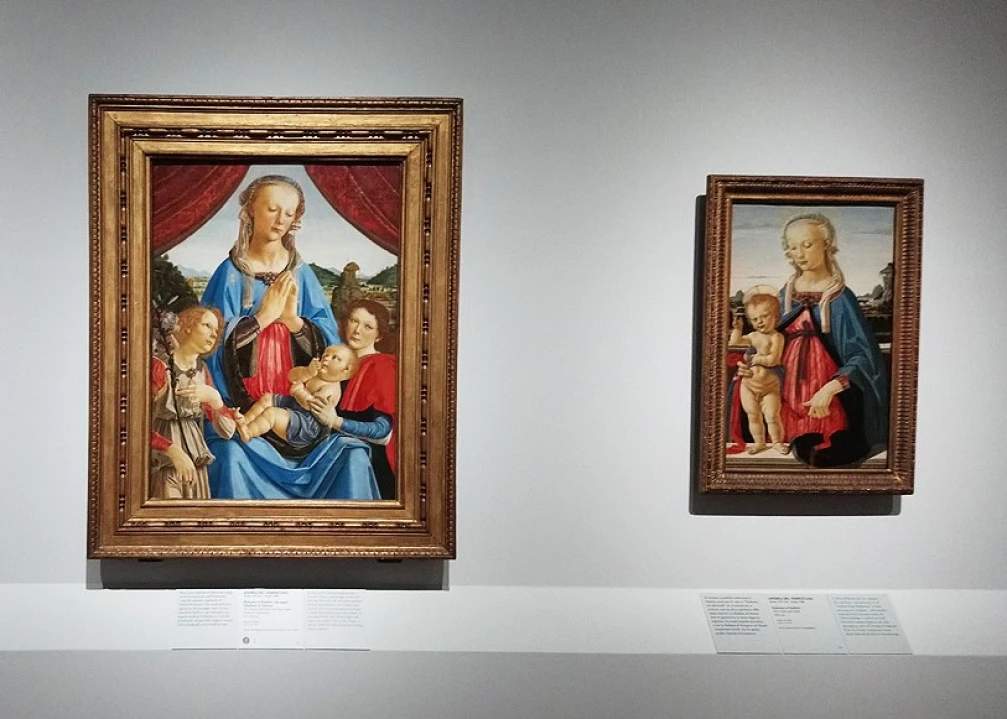The exhibition "Verrocchio, Leonardo's master" is currently drawing to a close in Palazzo Strozzi, with a section at the Museo Nazionale del Bargello, in Florence. The exhibition brings together for the first time extraordinary masterpieces by Andrea del Verrocchio, one of the greatest masters of the fifteenth century, in close confrontation with capital works of precursors, flankers and disciples such as Desiderio da Settignano, Domenico Ghirlandaio, Sandro Botticelli, Pietro Perugino, Bartolomeo della Gatta, Lorenzo di Credi and Leonardo da Vinci.
The exhibition includes over 120 works, including paintings, sculptures and drawings, and is the first retrospective ever dedicated to Verrocchio, while showing the beginnings of Leonardo da Vinci, with six of his works, some of which are exhibited for the first time in Italy. An extraordinary exhibition that offers an insight into the artistic production in Florence between 1460 and 1490, the time of Lorenzo the Magnificent. The exhibition aims to illustrate the inexhaustible creative vein of the master in a deep and continuous interweaving of painting and sculpture, presenting his work in constant dialogue with students out of the ordinary, for whom his workshop was a place of intense experimentation and sharing.
His teaching formed artists who have spread throughout Italy and abroad the taste and figurative language of Florence, as evidenced by works such as David on loan from the National Museum of Bargello, one of the absolute symbols of the art of the Renaissance and the city of Florence itself; and the Putto with Dolphin, on loan from the Museum of Palazzo Vecchio, capital work and model of naturalness. The sculpture had never been subjected to a scientific-conservative restoration. On the occasion of the exhibition, it was therefore the protagonist of an important intervention that visitors to Palazzo Vecchio were able to admire in a building site set up in the Hall of the Chancellery, the first room that housed the Putto in 1959, when by virtue of its value was transferred into the Museum and replaced with a copy in the Renaissance fountain.
The public was thus able to watch the cleaning and conservation operations live, which, in addition to returning the bronze surface and original chromatic harmonies, have revealed details that were invisible until now.
The restoration also included a rich campaign of non-invasive scientific investigations and examinations, endoscopic shots, microscopic surveys and 3D scans that will shed light on the history of the work and on the same executive technique of Andrea del Verrocchio, whose study is one of the specific objectives of the project.
"The prestige of the work and the opportunity of an international exhibition that will also reach Washington DC make this intervention even more important for our foundation", commented President Simonetta Brandolini d'Adda: " On behalf of Friends of Florence I thank our donors Ellen and James Morton, who made this restoration possible, and I thank the City of Florence and the Fondazione Palazzo Strozzi for having involved us in the preservation and enhancement of such an important masterpiece for the history of art and culture worldwide.
In the exhibition, the sculpture is accompanied by supreme paintings such as the Madonna and Child of the Gemäldegalerie in Berlin or the Madonna and Child with Angels and the Archangel Raphael and Tobiolo of the National Gallery in London: masterpieces presented together for the first time, which attest to the extraordinary talent of Verrocchio in the field of painting, where he became a reference point for his famous students.




